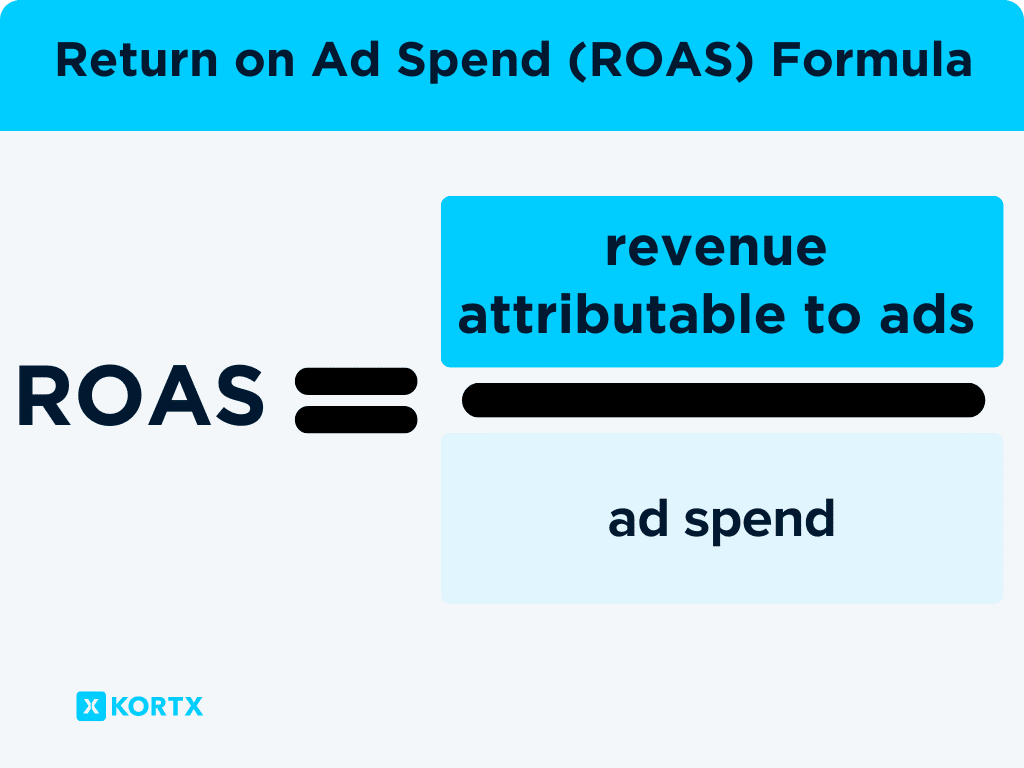Experiences refined for people
Experiences refined for people
Return on Ad Spend (ROAS) offers a clear and quantifiable way to assess the success of advertising campaigns. It helps determine whether an ad is successful in turning dollars into profits.
Explore what it is, why it’s critical for optimizing your ads, and how to calculate it.
Return on Ad Spend (ROAS) measures how much revenue a business generates for every dollar it spends on advertising. Understanding ROAS gives businesses a specific monetary value of what advertisers gain from their efforts, unlike broader metrics such as impressions or clicks.
What is ROAS, and why is it important for businesses to track?
“ROAS is the amount of revenue you’re getting back on every dollar spent on a campaign. While other performance metrics can give some insight into your campaign’s effectiveness, ROAS provides a clear look at the business impact and profitability of advertising investments.”

By tracking ROAS, advertisers can understand which aspects of their campaigns are effective—the audience type, media placement, or the advertising channels used. With this information, businesses can better allocate their budgets, focusing on strategies directly contributing to their growth and profitability.
To calculate ROAS, divide the revenue generated by the ad spend. The formula is:
ROAS = revenue attributable to ads/cost of ads (ad spend)

Example: if you spend $100 on ads and earn $500 in sales, your ROAS is 5:1. This means you’ve made five dollars for every dollar spent.
ROAS is a purely financial metric focusing only on money spent and earned. It does not consider other engagement metrics like clicks or video views.
Instead, ROAS provides a clear and concise measure of financial return, making it an essential metric for gauging the profitability of ad campaigns.
Determining a successful ROAS is subjective and varies by context. The primary goal is to achieve a positive ROAS, which means that the revenue generated from an ad campaign exceeds the cost of the campaign itself.
What constitutes a “good” ROAS varies significantly depending on the product, market conditions, and the campaign’s specific goals. It really depends on the product you’re selling and the channels you’re using. Larger numbers are generally more favorable, but measuring your results first and then using those measurements as benchmarks for future progress is crucial.
What is a good ROAS?
“A positive ROAS is essential. You want to see that the ads are not just driving traffic or engagement, but are actually leading to purchases and contributing more in revenue than what is being spent.
While businesses often look for specific numbers to quantify success, the focus should instead be on whether the ROAS is positive and improving over time. This approach allows businesses to adapt their strategies based on actual performance rather than adhering to arbitrary standards.”

Using Return on Ad Spend (ROAS) as a KPI (Key Performance Indicator) varies across marketing tactics and the stages of the advertising funnel.
ROAS may not be the most relevant metric for awareness campaigns and tactics like Connected TV (CTV) that introduce a brand to a broader audience. Metrics such as reach, CTR (click-through rates), VCR (video completion rates), and engagement rates are used instead, supporting long-term brand building rather than direct revenue generation.
This stage often involves targeted advertising to nurture leads, such as lead generation or content marketing through paid social and search. Measuring ROAS here helps assess how successfully these efforts move customers toward a purchase.
Tactics such as display ads, paid search, and social media targeting lower-funnel audiences can use ROAS to measure the effectiveness of each dollar spent on advertising in driving purchases.
For example, campaigns employing direct retail strategies or promotions in focused environments often show immediate, measurable ROAS improvements, directly linking ad spend to sales results.
Digital channels like paid search and social media often offer more immediate ROAS data than top-of-the-funnel tactics like CTV, thanks to online interactions’ direct and trackable nature. The increased trackability of these channels typically results in higher ROAS figures.
By recognizing that ROAS may not be equally applicable or achievable across all stages, marketers can set more realistic goals and tailor their strategies accordingly.
Return on Ad Spend (ROAS) and Return on Investment (ROI) are crucial for evaluating business activities but focus on different aspects of financial returns.
ROAS is a subset of ROI focused specifically on advertising. While ROAS looks at the direct return from ad expenditures, ROI considers a broader spectrum of costs and returns, providing a holistic view of profitability.
 Case Study Successes: How KORTX helped our clients achieve a high ROAS.
Case Study Successes: How KORTX helped our clients achieve a high ROAS. NFM: By combining KORTX’s Device Graph with winning video tactics, KORTX helped NFM achieve a 9.8X ROAS and 68.402 site activities.
NFM: By combining KORTX’s Device Graph with winning video tactics, KORTX helped NFM achieve a 9.8X ROAS and 68.402 site activities. Read more.
Read more. American Cancer Society: Using First-Party (1P) audience targeting, advanced contextual targeting, and Amazon ads, we achieved a 2.54X ROAS, generating over $1.52M in measurable donations.
American Cancer Society: Using First-Party (1P) audience targeting, advanced contextual targeting, and Amazon ads, we achieved a 2.54X ROAS, generating over $1.52M in measurable donations.  Read more.
Read more. Faith-Based Charity: We used advanced targeting, retargeting, and a First-Party data strategy to help our client achieve a 3X ROAS and $45.59 CPA.
Faith-Based Charity: We used advanced targeting, retargeting, and a First-Party data strategy to help our client achieve a 3X ROAS and $45.59 CPA. Read more.
Read more.Return on Ad Spend (ROAS) links ad spending directly to revenue. It allows businesses to adjust advertising strategies based on measurable financial returns, enhancing growth and profitability. Unlike ROI, which evaluates overall investment efficiency, ROAS offers precise insights into marketing efficacy. By focusing on achieving a positive ROAS, companies can refine their marketing tactics to drive sales and revenue, not just traffic and engagement.
With our expert team and your budget, we’ll make every marketing dollar count.
Gunnar Eisenmenger is a Senior Account Manager at KORTX.
From us to your inbox weekly.